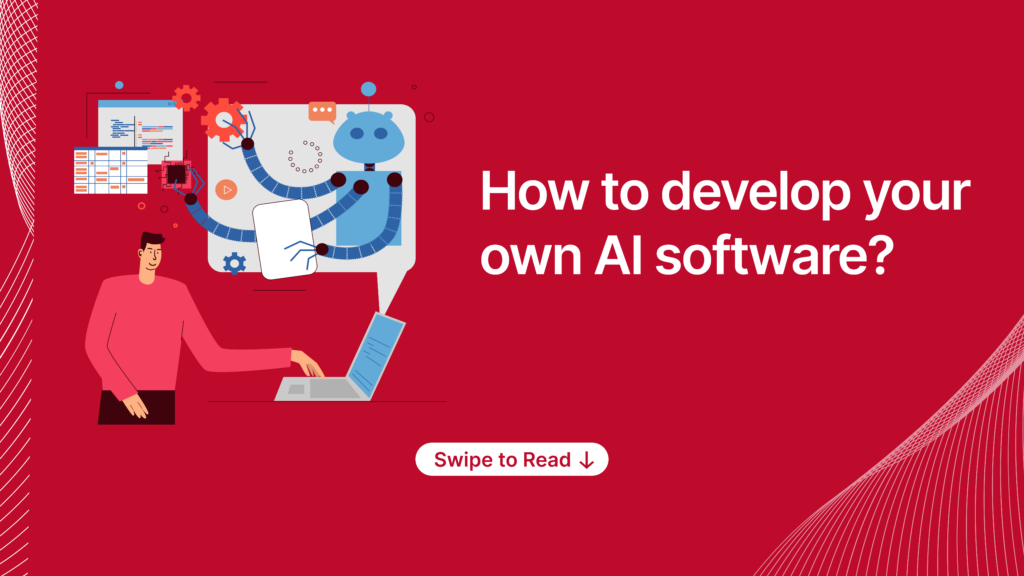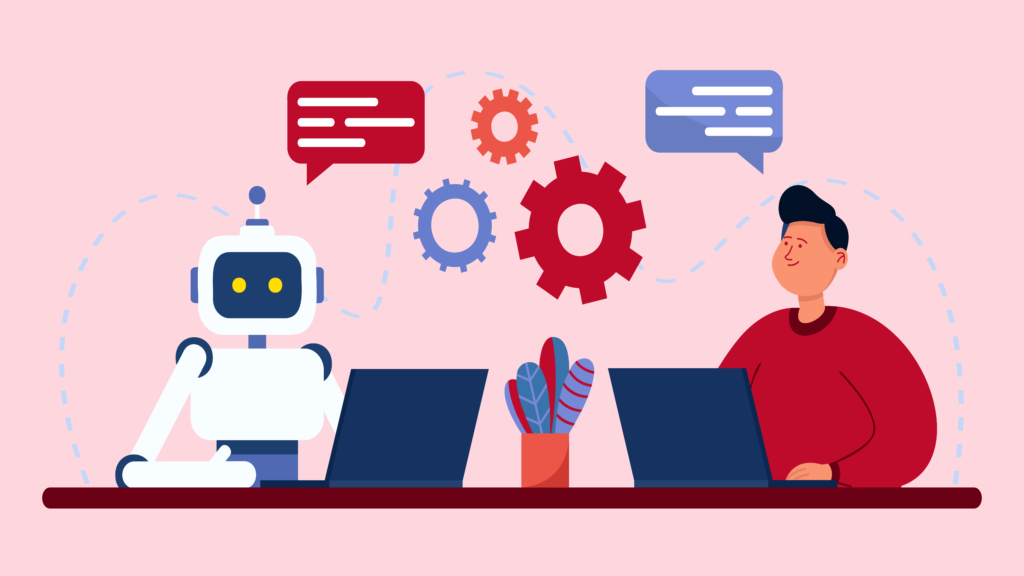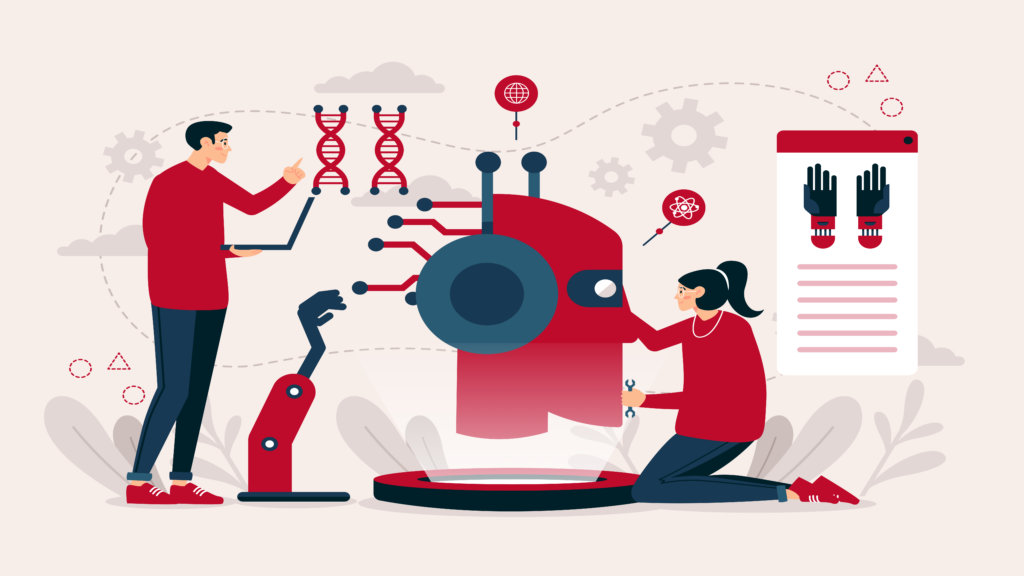
If you ever felt that your business was missing the “Wow” factor, it is now the right time to shift your focus to AI software. One of the best advantages of investing in AI-based software is that it allows you and your team to automate processes, improve overall decision-making, and help you achieve your business goals effectively.
When it comes to investing in AI software, the benefits are clear. Firstly, it allows companies to create valuable solutions for users. Secondly, it helps them stay competitive. And finally, it often leads to higher profits.
Looking at the numbers, Accenture predicts that AI could double the economic growth rate of some developed countries by 2035. Plus, the global AI software market is expected to hit $126 billion (about $390 per person in the US) by 2025. These stats show a promising future for AI software investors.
Building AI software sounds good but is challenging as one must invest time in developing an application with human-centred solutions. In this blog, we will discuss the best approach you can take as a founder when the concern is about developing your own AI software in 2024.
How to build AI-Software? 7 Key steps you need to follow
1: Identify the problem you have to solve with AI
The first step in developing AI software is identifying the problem you want to solve. This isn’t just about having a great idea; it’s about understanding the problem deeply and how AI can help. Why is this important? Because it determines the type of AI technology best suited for your project, like machine learning, natural language processing, or computer vision.
2: Gathering the right data and structuring it
The next step in creating an AI tool is gathering data. As the proverb goes, “A model is only as good as the data it’s trained on.” But what exactly is the “right data”? It’s data that’s relevant to the problem you’re solving, comprehensive enough to cover all possible outcomes, and free from biases.
Data generally falls into two categories: structured and unstructured. Structured data is well-organized and easy to search, like a spreadsheet with clear columns for names, addresses, and phone numbers. Unstructured data, on the other hand, is more complex and less organized. For instance, a transcript from a customer service call contains valuable information but isn’t structured in a predefined way. It includes natural language, varied sentence structures, and possibly idiomatic expressions, making it harder to use directly in AI models.
In AI projects, you’ll often deal with unstructured data, which requires significant preparation through a process called data cleaning.
3: Cleaning & preparing the data for training
The third step in building an AI tool is data cleaning. This involves organizing the data, removing incomplete entries, and making it usable for AI training by classifying it.
After cleaning the data, you upload it. But remember, every time you add new data or edit existing data, you’ll need to retrain the AI model. This training and retraining process is essential but can be time-consuming.
Gathering data for AI isn’t just about collecting a lot of information; it’s also about ensuring it’s the right type of data. You need to find the right balance between quantity, quality, and structure and prepare it carefully for effective AI training.
Here are some expert tips for organizing your data effectively:
1. Choose clear file names that reflect the content inside.
2. Provide relevant context for each piece of data.
3. Label your data clearly for easy retrieval.
4. Simplify tables by using chatbot-friendly formats like Markdown, JSON, or XML.
5. Avoid redundant data to reduce the hassle of updating information in multiple places.
4: Selecting the right AI technology
After gathering your data, it’s time to pick the AI technology that fits your requirements. There are various options to consider, including:
- Machine learning
- Speech recognition
- Natural language processing
- Augmented reality, and more.

5: Creating & training your AI model
Once you’ve chosen the AI technology, it’s time to build and train your model with the collected data. This process can be complex, but there are simpler options available, like using no-code AI platforms.
Here are some no-code AI platforms to consider:
- Google Cloud AutoML: Allows you to create AI models for tasks like image and text classification without coding.
- Amazon SageMaker: Offers a no-code solution for tasks such as image and text classification.
- Microsoft Azure Machine Learning: This lets you develop AI models for various tasks without coding.
Another option is to use visual programming languages, which allow you to build AI models by dragging and dropping code blocks. It’s a straightforward way to create AI models without coding knowledge.
6: Testing the AI software
Testing the AI model is crucial to ensure its effectiveness and accuracy. During testing, the model is evaluated using separate data to assess its performance and identify any potential issues or areas for improvement. This iterative process involves running various tests and simulations to validate the model’s functionality across different scenarios, helping refine its algorithms and optimize its performance.
7: Deploying the AI model
Deploying the AI model involves making it accessible and operational for its intended use. This typically involves integrating the model into existing systems or applications, configuring it to interact with users or other software components, and ensuring scalability, reliability, and security. Deployment also includes monitoring the model’s performance in real-world settings and adjusting as needed to maintain optimal functionality.
Future trends in AI software development

Current trends in AI software development are shifting towards bringing generative AI models closer to edge devices. This approach aims to enhance decision-making capabilities by situating intelligence closer to the data source. By reducing reliance on third-party cloud processing, these models minimize latency and improve user experience. Applications range from AI for autonomous vehicles to industrial process control, where real-time decision-making is crucial.
Moreover, the rise of low-code and no-code platforms is democratizing AI development. These tools empower developers with diverse skill sets to contribute to creating and training AI models, making AI more accessible and inclusive across the market.
Bottomline
As AI changes how businesses operate, many want to make their own AI software. While you could try doing it yourself, there are challenges.
A better option? Get help from experienced developers. Just remember, AI software is more than regular apps – it needs specialized skills to create and train AI models. Let the experts handle it for the best results.











